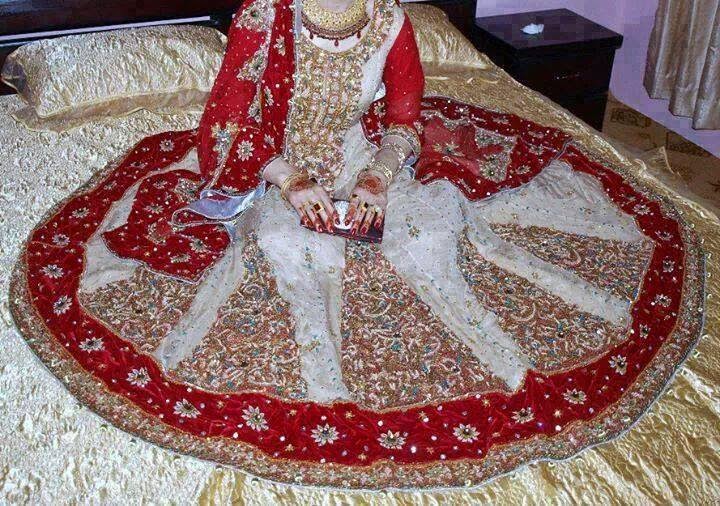Lehenga or Ghagra is a form of skirt which is long, embroidered and pleated. It is worn as the bottom portion of a Gagra choli. It is secured at the waist and leaves the lower back and Midriff bare. The ancient version of skirt or Ghagri evolved from Bhairnivasani, which in turn evolved from the Antariya when stitched on one side became tabular and was worn gathered together at the waist, and held by a girdle. This was one of the earliest forms of a clumsily stitched skirt. It was worn using drawstring or nada. The ghagri was a narrow skirt six feet long the same length as original antariya. This style can still be seen worn by jain nuns in India.
Until the early 20th century, women irrespective of class largely wore gagras which reached down to ankles, especially in Hindi.
This was largely due to jeweled toes showed martial status of women as both married and unmarried women observed Ghungat Gagras were made out of two to three layers of coarse khadi fabric which created large flared look and remained largely undecorated but were decorated with gota strips along the border on special occasions. Most commonly used dyes were Indigo, Lac and Haldi. This style can still be seen in rural areas of Haryana, Utar Pardesh & Madhyea Pardesh particularly during folk festivals.
Ancient unstitched form of gagra has survived in folk theater costumes across India, particularly in Khatakali of Kerala, where layers of pleated khadi fabric are laid over a nada and tied around the waist creating layers of flared skirt. This reflects simplistic early style of unstitched gagras worn in ancient times.






No comments:
Post a Comment